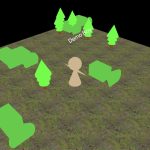Golang, also known as Go, is a powerful programming language with a growing community of developers. One essential data structure in Golang is the linked list. In this comprehensive guide, we will dive deep into Golang linked lists, discussing their implementation and usage while providing in-depth code examples. By the end of this article, you should have a solid understanding of linked lists in Golang and how to use them effectively.
Understanding the Basics of Golang Linked Lists
What is a Linked List?
A linked list is a linear data structure composed of elements, called nodes, that are connected in sequence. Each node contains two pieces of information: the data it holds and a reference (or pointer) to the next node in the sequence. The first node in the list is called the head, while the last node is the tail. The tail node’s reference points to nil, indicating the end of the list.
Linked lists offer several advantages over arrays, such as constant-time insertions and deletions and efficient memory usage. However, they have a higher overhead and slower random access times.
Creating a Node Structure in Golang
To create a linked list in Golang, we first need to define a node structure using a struct. The node struct will have two fields: the data it holds (in this case, an integer) and a reference to the next node in the sequence. The following code example demonstrates how to define a simple node struct in Golang:
type Node struct {
Data int
Next *Node
}
With this struct, we can now create nodes and link them together to form a linked list. In the next sections, we will explore various operations you can perform on Golang linked lists.
Insertion, Deletion, and Traversal of Golang Linked Lists
Insertion, deletion, and traversal are fundamental operations for manipulating linked lists. We will discuss each operation in detail and provide code examples to help you understand their implementation in Golang.
Insertion: To insert a node into a Golang linked list, we first create a new node with the desired data, then update the reference of the previous node to point to the new node. The following code example demonstrates how to insert a new node at the beginning of a linked list:
func insertAtBeginning(head *Node, newData int) *Node {
newNode := &Node{Data: newData, Next: head}
return newNode
}
Deletion: Deleting a node from a Golang linked list requires updating the reference of the previous node to point to the node after the one being deleted. Additionally, the memory occupied by the deleted node should be freed. The following code example shows how to delete a node with a specific value from a linked list:
func deleteNode(head *Node, value int) *Node {
if head == nil {
return nil
}
if head.Data == value {
return head.Next
}
currentNode := head
for currentNode.Next != nil {
if currentNode.Next.Data == value {
currentNode.Next = currentNode.Next.Next
break
}
currentNode = currentNode.Next
}
return head
}
Traversal:
Traversal is the process of visiting each node in a linked list and performing an operation on its data. To traverse a Golang linked list, we start at the head and follow the references to the next node until we reach the tail node. The following code example demonstrates a simple traversal operation that prints the data in each node:
func traverse(head *Node) {
currentNode := head
for currentNode != nil {
fmt.Println(currentNode.Data)
currentNode = currentNode.Next
}
}
Working with Doubly Linked Lists in Golang
A doubly linked list is a variation of the basic linked list structure, with each node containing references to both the next and previous nodes in the sequence. This additional reference allows for bidirectional traversal, making some operations more efficient compared to singly linked lists. The following code example demonstrates how to define a simple doubly linked list node struct in Golang:
type DoublyNode struct {
Data int
Next *DoublyNode
Prev *DoublyNode
}
Insertion, deletion, and traversal operations for doubly linked lists are similar to those for singly linked lists, with the main difference being the need to update the additional Prev reference when manipulating nodes. For more in-depth examples and explanations of working with doubly linked lists in Golang, refer to this comprehensive guide on doubly linked lists.
Conclusion and Further Reading
In this comprehensive guide, we explored Golang linked lists, their implementation, and their usage. We covered the basics of linked lists, node structure creation, and common operations like insertion, deletion, and traversal. Additionally, we briefly discussed doubly linked lists and their advantages over singly linked lists.
For more information on Golang and other programming topics, check out these articles on our website:
- Mastering JavaScript: A Comprehensive Guide to DOM Manipulation and Event Handling for Interactive Websites
- Powerful Python Tips: Web Scraping
- Managing Kubernetes Storage: Best Practices and Code Examples
- A Comprehensive Introduction to Kubernetes
- Python Documentation: Best Practices and Tools to Create Effective Documentation
We hope this guide has helped you understand Golang linked lists and how to use them effectively. Keep practicing and experimenting with linked lists in Golang to become more proficient in their usage and manipulation.







